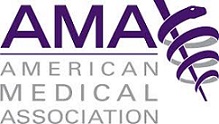 Champions Reboot of Technology to Help Physicians Take Better Care of Patients
Champions Reboot of Technology to Help Physicians Take Better Care of Patients
Building on its landmark study with RAND Corp. confirming that discontent with electronic health records (EHRs) is taking a significant toll on physicians, the American Medical Association (AMA) called for solutions to EHR systems that have neglected usability as a necessary feature. Responding to the urgent physician need for better designed EHR systems, the AMA released a new framework outlining eight priorities for improving EHR usability to benefit caregivers and patients.
“Physician experiences documented by the AMA and RAND demonstrate that most electronic health record systems fail to support efficient and effective clinical work,” said AMA President-elect Steven J. Stack, M.D. “This has resulted in physicians feeling increasingly demoralized by technology that interferes with their ability to provide first-rate medical care to their patients.”
While AMA/RAND findings show physicians generally expressed no desire to return to paper record keeping, physicians are justly concerned that cumbersome EHR technology requires too much time-consuming data entry, leaving less time for patients. Numerous other studies support these findings, including a recent survey by International Data Corporation that found 58 percent of ambulatory physicians were not satisfied with their EHR technology, “most office-based providers find themselves at lower productivity levels than before the implementation of their EHR” and that “workflow, usability, productivity, and vendor quality issues continue to drive dissatisfaction.”
“Now is the time to recognize that requiring electronic health records to be all things to all people — regulators, payers, auditors and lawyers — diminishes the ability of the technology to perform the most critical function — helping physicians care for their patients,” said Dr. Stack. “Physicians believe it is a national imperative to reframe policy around the desired future capabilities of this technology and emphasize clinical care improvements as the primary focus.”
To leverage the power of EHRs for enhancing patient care, improving productivity, and reducing administrative costs, the AMA framework outlines the following usability priorities along with related challenges:
- Enhance Physicians’ Ability to Provide High-Quality Patient Care
- Support Team-Based Care
- Promote Care Coordination
- Offer Product Modularity and Configurability
- Reduce Cognitive Workload
- Promote Data Liquidity
- Facilitate Digital and Mobile Patient Engagement
- Expedite User Input into Product Design and Post-Implementation Feedback
These priorities were developed with the support of an external advisory committee comprised of practicing physicians, as well as noted experts, researchers and executives in the field of health information technology.
Despite numerous usability issues, physicians are mandated to use certified EHR technology to participate in the federal government’s EHR incentive programs. Unfortunately, the very incentives intended to drive widespread EHR adoption have exacerbated and, in some instances, directly caused usability issues. The AMA has called for the federal government to acknowledge the challenges physicians face and abandon the all-or-nothing approach for meeting meaningful use standards. Moreover, federal certification criteria for EHRs need to allow vendors to better focus on the clinical needs of their physician customers.
The AMA recognizes that not all EHR usability issues are directly related to software design itself. Some issues are a result of institutional policies, regulations, and sub-optimal implementation and training. The AMA will continue to move aggressively on these fronts, including empowering physicians to work with vendors and other to develop and implement more usable products.
To advance these goals, the AMA plans to utilize the eight usability priorities to lead EHR improvements for physicians, vendors, federal and state policymakers, institutions and health care systems and researchers, which could ultimately lead to greater professional satisfaction for physicians. Through these efforts, the AMA hopes to advance the delivery of high-quality and affordable health care to improve the health of the nation.
About the AMA
The American Medical Association is the premier national organization dedicated to empowering the nation’s physicians to continually provide safer, higher quality, and more efficient care to patients and communities. For more than 165 years the AMA has been unwavering in its commitment to using its unique position and knowledge to shape a healthier future for America.
